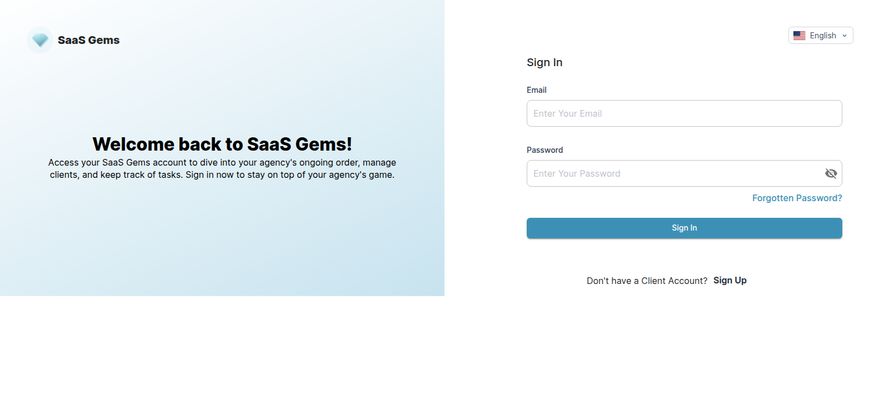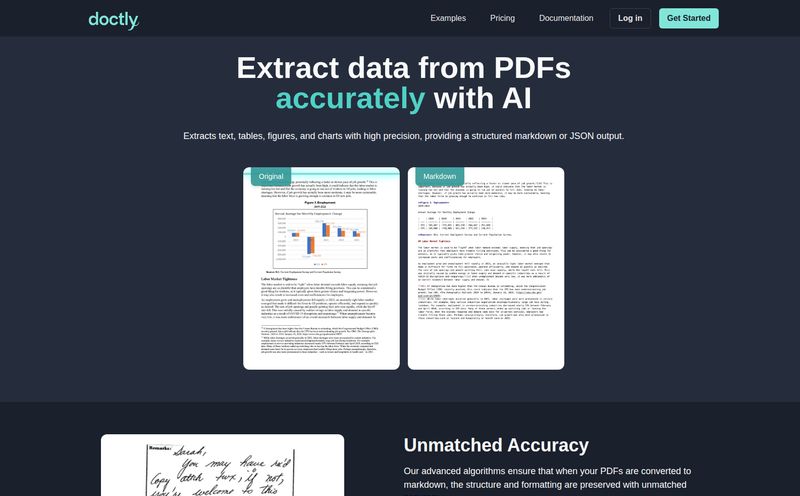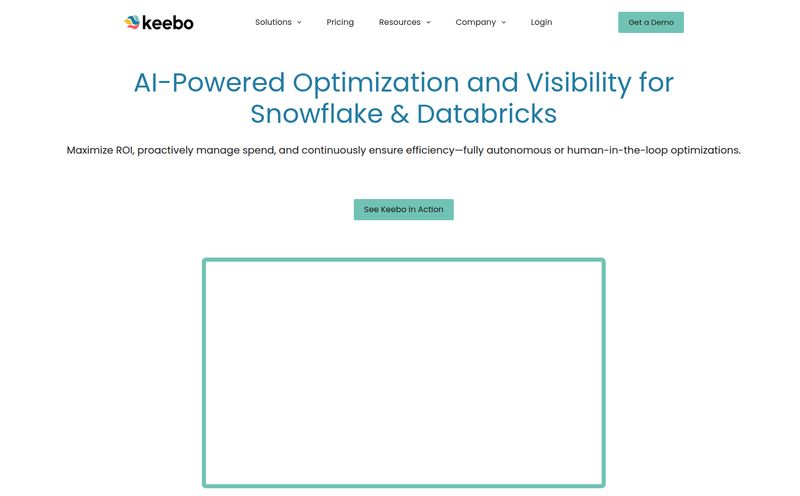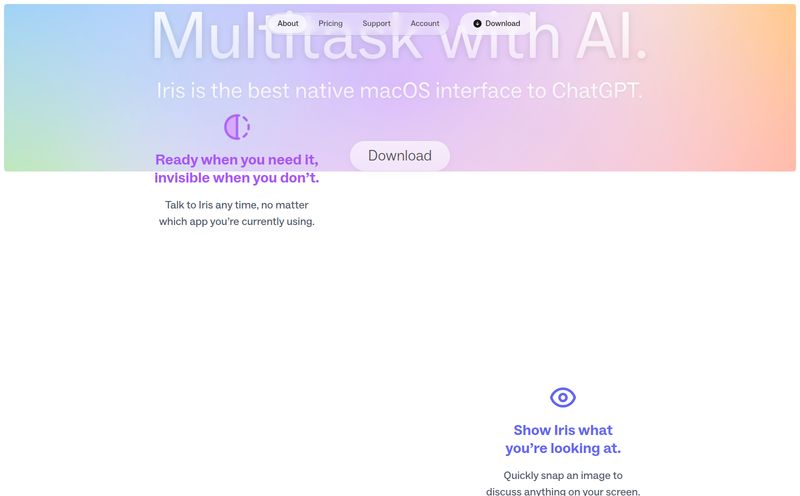You and me. You've got that killer SaaS idea, right? The one that's been rattling around in your brain for months. You've mapped out the user flows, you know exactly what problem it solves, and you're ready to build. But then... reality hits.
The login page. User authentication. Password resets. Subscription billing with Stripe. Team invitations. The boring, repetitive, soul-crushing stuff you have to build every single time. I swear, if I have to configure user roles and permissions from scratch one more time, I might just pack it all in and become a mushroom forager. It's the necessary evil of software development, the digital equivalent of doing your taxes.
This is the exact moment of despair where tools like SaaS Boilerplates come into the picture. I stumbled across it recently, and it's essentially a curated directory of starter kits designed to let you skip all that drudgery and get straight to building the cool features that make your app unique. But is it too good to be true? Let's get into it.
First Off, What in the World is a SaaS Boilerplate?
For anyone not deep in the dev world, let's clarify. A boilerplate is not some arcane piece of code. Think of it like buying a high-quality model kit. You get all the essential, foundational pieces already built and designed to fit together: the chassis, the engine, the wheels. You don't have to waste time milling your own engine block; you get to the fun part—painting it, adding the custom spoilers, and making it your own.
In the SaaS world, a boilerplate gives you a pre-built foundation that includes things like:
- User Authentication (Sign up, Login, OAuth)
- Subscription Management (Stripe/Paddle integration)
- Database Setup
- Basic User Dashboards
- Email Services
Basically, all teh stuff that every SaaS product needs but has nothing to do with your core idea.
So, How Does SaaS Boilerplates Fit In?
Okay, so boilerplates are great. But you can just find them on GitHub, right? Well, yes and no. Googling "SaaS boilerplate" opens a Pandora's box of abandoned projects, poorly documented code, and kits that only work with some obscure, forgotten JavaScript framework from 2016.
This is where SaaS Boilerplates tries to add value. It isn't a single product; it's a curated directory. The keyword here is curated. The idea is that someone has already sifted through the noise to present you with a list of viable, modern, and (hopefully) well-maintained options. The platform itself seems to be connected to something called 'SaaS Gems', based on some of the branding I've seen, which suggests a focus on quality finds. It feels less like a chaotic flea market and more like a boutique.

Visit SaaS Boilerplates
You can search and filter by tech stack—a huge plus. Whether you're a die-hard Python/Django fan, a Node.js and React enthusiast, or you're building with something like Laravel or Ruby on Rails, the goal is to find a starting point that fits your skills. This simple filtering saves a ton of time right away.
The Good, The Bad, and The Codey
No tool is perfect. In my years of playing around with traffic generation and SEO for startups, I've learned that every shortcut has a potential pothole. So let's break down the pros and cons based on my experience and what the platform offers.
The Upside: Why I'm Genuinely Excited
The most obvious benefit is speed. The time-to-market for a new MVP could be cut from weeks to days. All those hours you'd spend wrestling with OAuth2 flows can now be spent talking to actual users. For an indie developer or a small startup, that's not just a convenience, it's a competitive advantage.
The curation aspect is also a massive plus. It provides a layer of trust. While you still need to do your homework, starting from a vetted list is infinitely better than picking a random project off GitHub. It's like getting restaurant recommendations from a local friend versus just picking a place with a flashy sign.
Potential Gotchas: Things To Watch For
Let's be real. When you use someone else's foundation, you're buying into their opinions and their way of doing things. Customization can be a hurdle. If the boilerplate's author decided to use a specific state management library you hate, you're either stuck with it or you're in for a tricky refactoring job. It's the classic speed vs. control trade-off.
And while the directory is curated, quality is still a spectrum. Some boilerplates will have five-star documentation and an active community, while others might be the pet project of a single developer who could get bored next month. There's also a learning curve. You have to spend time understanding the boilerplate's architecture before you can be truly productive. Don't expect to download it and be pushing custom features in ten minutes.
And the Million-Dollar Question: What's the Price?
This is where it gets interesting. The SaaS Boilerplates directory itself is just that—a directory. It's free to browse and explore. However, the boilerplates it lists are independent products.
You'll find a mix of pricing models:
- Open-Source: Completely free, but might require more setup and offer less support.
- One-Time Purchase: Pay once, get lifetime access. These often range from $100 to $500+.
- Subscription: Some newer models charge a recurring fee for ongoing updates and support.
So, there's no single answer. You have to click through and see the pricing for the specific starter kit that catches your eye. Honestly, I prefer this model. It allows for everything from a bootstrapped free option to a premium, fully-supported solution.
Is This Directory Right for You?
In my opinion, SaaS Boilerplates is a fantastic resource for a few specific groups:
- Indie Hackers & Solopreneurs: If you're a one-person army, your time is your most valuable asset. This is a no-brainer.
- Agencies & Freelancers: Building similar types of apps for different clients? A solid boilerplate could streamline your entire workflow.
- Rapid Prototyping: If you just want to validate an idea quickly without investing months in development, this is your fast track.
Who is it not for? Probably large enterprise teams with deeply entrenched tech stacks and very specific compliance and architecture requirements. They're more likely to have their own internal boilerplates anyway.
FAQs About SaaS Boilerplates
What exactly is a SaaS boilerplate again?
It's a pre-built code foundation for a new software project. It handles common features like user login, payments, and database setup so you can focus on building the unique parts of your application.
Is the SaaS Boilerplates website free to use?
Yes, browsing the directory of boilerplates is free. However, the individual boilerplates listed will have their own costs, which could be a one-time fee, a subscription, or completely free if they are open-source.
How much can I customize a boilerplate?
It depends on the boilerplate. Most are designed to be highly customizable, but you are starting with someone else's code structure. Major architectural changes can be difficult, so it's best to pick a boilerplate that already aligns with your vision.
Are all the starter kits in the directory high quality?
The directory is curated, which helps filter out low-quality options. However, quality can still vary. It's always a good idea to check the documentation, community, and last-updated date of a boilerplate before committing to it.
What kind of tech stacks are available?
You can typically find boilerplates for most popular web development stacks, including Node.js/React (the MERN/T3 stack), Python/Django, Ruby on Rails, PHP/Laravel, and more. The directory's filtering helps you find one that matches your team's expertise.
Final Thoughts: A Solid Starting Block
So, what's the final verdict? I think SaaS Boilerplates is a genuinely useful tool. It's not a magic wand that builds your business for you, but it is a powerful accelerator. It addresses a very real, very common pain point for developers and entrepreneurs.
By taking the grunt work out of the equation, it lets you pour your energy into what truly matters: creating value for your customers. And in the fast-moving world of software, that head start can make all the difference. It's less of a shortcut and more of a smarter starting line.
References and Sources
- SaaS Boilerplates Official Website
- The Build vs. Buy Calculus on Indie Hackers
- Example of an Open Source SaaS Starter Kit on GitHub



